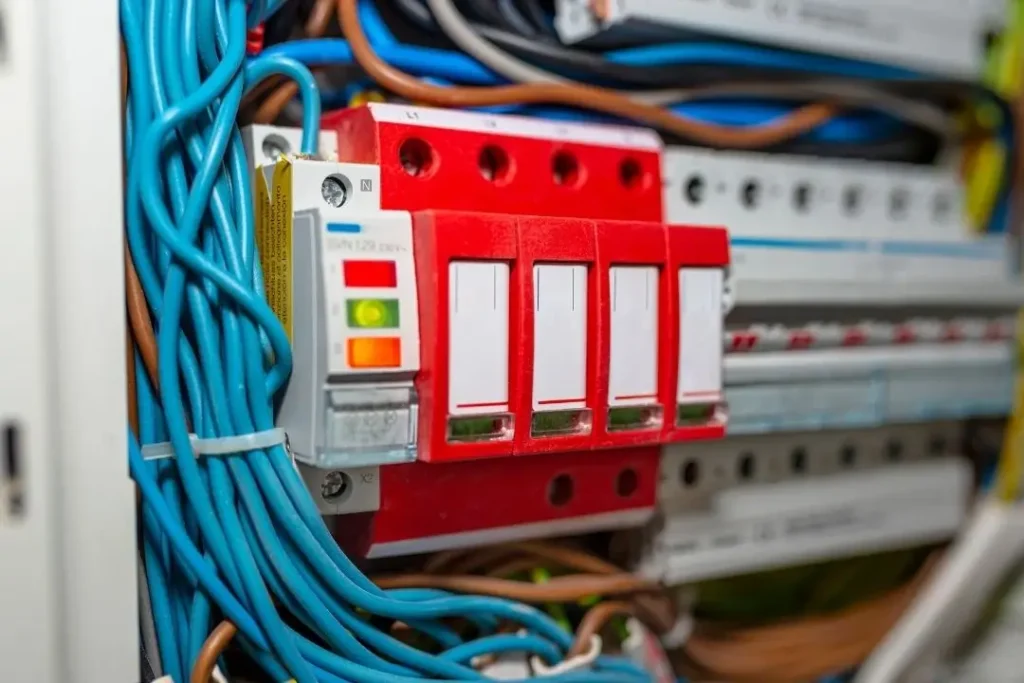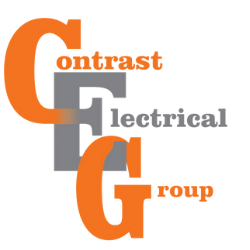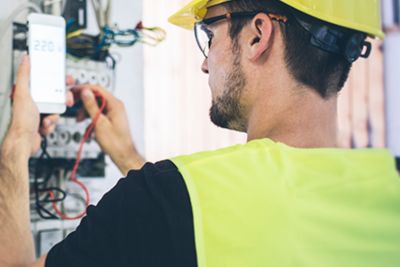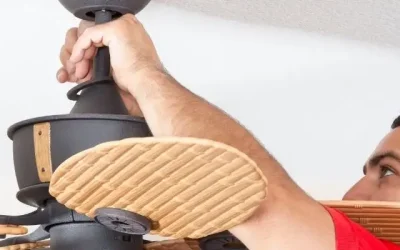Power surges might be brief, but the damage they leave behind can be serious. They can ruin appliances, knock out circuit boards, and even increase the risk of electrical fires. With Toowoomba’s storm season bringing in heavy rain and lightning each year, it’s important to make surge protection a priority for your home. In this post, we’ll walk you through what a power surge is, what causes it, and the steps to keep your home safe. We’ll also explain how surge protection devices work and why they’re worth installing, especially before the next big storm rolls in.
What is a Power Surge?
A power surge is a sudden spike in voltage that travels through a home’s electrical system. In Australia, homes typically run on 230 volts, though in practice, the voltage at the outlet can often be closer to 240 V. During a surge, it can shoot much higher for a split second. Some surges are small and can go unnoticed, but they can still wear down your appliances over time. However, bigger surges can cause immediate damage, such as blowing circuits, frying electronics, or even starting a fire.
Anything plugged in at the time is at risk, especially sensitive items like computers, TVs, fridges, and air conditioners. These devices often have delicate circuit boards and components that aren’t built to handle voltage spikes. Even a single strong surge can shorten their lifespan or stop them from working altogether.
What Causes Power Surges?

Power surges can come from inside your home or from outside sources. Some are unpredictable, while others are linked to everyday activity. Here are some of the most common causes:
Lightning Strikes
Toowoomba’s storm season brings frequent lightning, which makes this one of the biggest surge risks for local homes. A lightning strike near your property or anywhere along the power lines can send thousands of volts through the electrical system in an instant. Even if the strike isn’t direct, the surge can still travel through the network and damage anything that’s plugged in.
Power Outages and Grid Switching
When the power comes back on after an outage, the sudden return of electricity can cause a surge. These types of surges often hit with no warning and can affect everything that’s still connected to power at the time. They’re especially risky for homes with sensitive electronics that remain plugged in during blackouts.
Faulty or Old Wiring
If your home has damaged, outdated, or poorly installed wiring, it may struggle to handle voltage correctly. Homes with older electrical systems are especially vulnerable since worn components can allow small surges to build up over time. This kind of internal instability can go unnoticed until appliances start to fail or lights begin flickering.
High-Powered Appliances Turning On and Off
Large appliances like air conditioners, fridges, and washing machines draw a lot of power when they cycle. These small internal surges can wear down sensitive electronics or cause light to flicker. If multiple appliances kick in at once, the load on your system can spike unexpectedly.
Drowned Power Lines or Utility Issues
Fallen power poles, car accidents involving infrastructure, or maintenance on the grid can also lead to unexpected voltage spikes affecting your home. These surges can travel through the local network and reach homes several streets away from the source. Strong winds and heavy rain during storm season in Toowoomba often lead to fallen branches or trees, bringing down power lines, making this a real concern for many neighbourhoods.
Signs You May Have Experienced a Power Surge

Not all power surges are obvious, but they often leave signs behind. If you’ve noticed the following, your home may have been affected:
- Lights flickering or dimming. Sudden changes in brightness can signal a sign of fluctuation during or after a surge.
- Tripped circuit breakers. If your breakers trip without a clear cause, it could be your system reacting to a sudden spike in power.
- Appliances acting up or failing early. Devices that shut off unexpectedly, restart on their own, or stop working altogether might have taken a hit from the surge.
- Burning smell or visible damage near power points. Scorch marks, melted plastic, or a faint burnt smell around outlets are signs that excess voltage has passed through. This should be checked by a licensed electrician right away.
How Surge Protection Devices Work
A surge protection device or SPD is designed to block excess voltage from reaching your appliances. When a spike in power occurs, the SPD quickly redirects the extra electricity away from your home’s wiring and safely into the ground. This helps prevent damage to your electrical system and anything plugged in at the time.

There are two main types of surge protection used in homes:
- Whole-house surge protectors. These are installed at the main switchboard and protect your entire home at once. They’re designed to stop large surges before the electricity flows through to your appliances. Installation must be done by a licensed electrician Toowoomba homeowners can rely on for safe, compliant work.
- Power board surge protectors. These look like regular power boards but include built-in protection. They’re great for shielding individual devices like computers, TVs, modems, or gaming consoles. While they’re useful, they don’t offer the same full coverage as a switchboard-installed device.
Toowoomba’s summer storms often bring lightning strikes and sudden power outages, which make SPDs especially important for local homes. Using both types of surge protection will give you the best coverage.
How to Protect Your Home from Power Surges
While power surges aren’t always preventable, there are several things you can do to reduce the risk of damage to your home and appliances:
Install a Whole-House Surge Protector
This is one of the most effective ways to protect everything in your home. It’s installed at the main switchboard and stops high-voltage spikes before they reach your appliances.
Use Surge-Protected Power Boards
Plug sensitive electronics like computers and TVs into power boards with built-in surge protection. They provide an extra line of defence, especially for devices you use daily.

Unplug Appliances During Storms
If a storm is coming, unplug non-essential electronics and devices. This is a simple and effective way to avoid damage from a major lightning-induced surge.
Check Your Home’s Wiring
Older homes or properties with dodgy wiring are more vulnerable to internal surges. If your wiring is outdated, it may be worth considering a full house rewire to bring everything up to modern standards.
You can also take a few extra precautions during storm season to keep your home and family safe. For more practical advice, check out our blog post on electrical safety at home during a storm. The Queensland Government also provides official guidance on how to stay safe around electricity during severe weather.
Extra Electrical Safety Tips for Toowoomba Homes
Surge protection is just one part of keeping your home’s electrical system safe and reliable. Here are a few more electrical safety tips to keep in mind, especially if you live in an older home or a storm-prone area:
- Test your safety switches regularly. Safety switches are designed to shut off power quickly. Press the ‘test’ button once a month to make sure they’re working properly. If they don’t trip or reset correctly, call a licensed electrician.
- Book a switchboard inspection. If your switchboard inspection is more than 10 years old, it probably doesn’t meet current safety standards. An inspection can help identify any outdated components or signs of wear, and an electrician can recommend whether a switchboard upgrade is needed.
- Trim trees near power lines. Overhanging branches can knock out power or bring down lines during high winds. Keeping vegetation clear from power lines is a good safety practice ahead of storm season.
- Avoid DIY electrical work. It’s illegal to carry out your own electrical work unless you’re licensed in Queensland. Even small jobs can carry serious risks if something goes wrong. Always hire a qualified Toowoomba electrician for repairs, upgrades, or new installations.
Why Surge Protection Matters and What to Do Next
Power surges might be quick, but the damage they can cause can be long-lasting and expensive. With Toowoomba’s intense storm season, taking a few simple steps now can help protect your home, your appliances, and your peace of mind. Installing a surge protection device, addressing any electrical faults, and making sure your wiring and power points are up to standards are all smart moves, especially if your home is older or has frequent electrical issues.
When in doubt, a professional inspection can give you a clear picture of your home’s electrical safety. We offer expert surge protection installation, advice on wiring upgrades, and full safety checks to help you prepare before storm season hits. Contact us today for more information or for a free quote.




